“Travelers will see in the Palazzo Riccardi, the former home of the Medici, a very well-preserved chapel by Benozzo Gozzoli. There is a rare profusion of gold in the frescoes, a spontaneous and vivid imitation of nature that makes it precious today: the clothes, the harnesses of the horses, the furniture and even the way the figures of the time move and look. Everything is rendered with impressive truth.” Praising the beauty of the Chapel of the Magi by Benozzo Gozzoli (Benozzo di Lese di Sandro; Badia a Settimo, 1420/1421 - Pistoia, 1497) is Stendhal in his Histoire de la Peinture in Italie: not even the great Marie-Henri Beyle had resisted the allure of one of the most splendid and singular rooms of the Florentine Renaissance, which has remained virtually untouched since the time it was made, although it was originally larger and has undergone diminution over time. It was 1459 when Benozzo was called by Cosimo de’ Medici (Florence, 1389 - Careggi, 1464) to fresco the chapel of the family palace built between 1444 and 1445 on Via Larga, today’s Via Cavour. Moreover, the setting was unique at the time, since it was the first authorized chapel in a private palace in Florence.
The vicissitudes of the Chapel were made the subject of in-depth study as part of the exhibition Benozzo Gozzoli and the Chapel of the Magi (Florence, Museo di Palazzo Medici Riccardi, from December 16, 2021 to March 10, 2022, curated by Serena Nocentini and Valentina Zucchi), which investigated its origins and the process of its realization, including through the display of drawings related to the execution of the frescoes, with extensive use of multimedia apparatus, and without neglecting the artist’s ties with the Medici. Before arriving at the Chapel, it is indeed interesting to understand how Benozzo managed to enter the orbit of the powerful family that, with the return of Cosimo the Elder from Venetian exile in 1434, established itself by establishing de facto lordship over the city. Of Benozzo’s training we do not know much: however, Nocentini and Zucchi reiterated at the Palazzo Medici Riccardi exhibition the Vasarian idea that the artist must have taken his first steps in painting together with Beato Angelico (Vicchio, c. 1395 - Rome, 1455), having learned his first rudiments by observing the work of his father, a farsettaio (i.e., a tailor), and by frequenting the workshops of the city’s embroiderers. We know, however, that Benozzo collaborated with Angelico in the convent of San Marco, although it is still to be clarified to which hands the details of the frescoes in the complex should be referred. The Madonna and Child with Angels in the National Gallery in London is one of the earliest works attributed to Benozzo, and it is possible here, Nocentini and Zucchi write, “to grasp the natural skill in the rendering of the fabrics, as well in the robes as in the very fine canopy.” as well as the refinement of the composition “built according to a precise spatial layout and very refined in its finishes, accomplice the extensive use of gold leaf,” which reveals “the artist’s inclination for details, evident in the depiction of the natural environment, rich in pungent and imaginative polychromes and in symbolic dialogue with the flowery carpet at the feet of the Virgin.” skills that would come in very handy to the artist at the time of the creation of the frescoes in the Chapel of the Magi.
In the 1950s Benozzo specialized in fresco technique, and as a fresco painter he was particularly in demand in Umbria and Lazio, where he worked throughout the decade. After that, Benozzo returned to Florence in 1459, although the reason is not known to us: however, Cristina Acidini hypothesizes that the Madonna and Child with Nine Angels at the Detroit Institute of Arts (of which we do not know the original destination, nor the name of the commissioner) should date back to this period, but “it may have been a sort of calling card with the Medici family, earning him trust and esteem in view of the prestigious commission” (so Nocentini and Zucchi). At the time when Benozzo was called to fresco the chapel, the environment was obviously already ready: Cosimo entrusted it to his architect, the great Michelozzo di Bartolomeo (Florence, 1396 - 1472), who took as his model the layout of Filippo Brunelleschi’s Old Sacristy, thus designing a hall, that is, the main room, a scarsella connected to it (it is the smaller room where the altar is located), and two side ricetti (today only the left one survives). By the time Benozzo arrived to paint the frescoes, the chapel already had its sumptuous coffered ceiling in the hall and the spectacular radiant monogram of Christ in the ceiling of the scarsella, the large fluted pilasters with Corinthian capitals marking the walls, and the inlaid floor made of white marble, gray granite, green serpentine, and red porphyry, culminating in the center with a large disk of red porphyry (a material related to imperial power), of archaeological provenance (the ceiling and floor we see today are the result of reconstruction, with original materials, in 1929). Only the paintings were missing when, in April 1459, Cosimo received the son of his ally the Duke of Milan, Galeazzo Maria Sforza, at the palace. Why did the Medici entrust Benozzo with the decorations of such an important room, instead of granting the commission to an already proven painter such as the more experienced Filippo Lippi might have been? According to scholar Cristina Acidini, it was a combination of contingent circumstances, reasons of political expediency and artistic evaluations: Lippi had already been entrusted with the panel of the altar of the scarsella (now in Berlin: in its place on the chapel is a workshop copy), and he was also already busy with the frescoes in Prato Cathedral, “and then, of the glorious mid-century generation,” Acidini writes, “Andrea del Castagno was dead, Paolo Uccello and Domenico Veneziano were aging, Piero della Francesca was dividing his time between Rome and Arezzo, Alesso Baldovinetti was perhaps too close to the Pazzi... Benozzo, an experienced and successful painter, also gave sufficient guarantees for having been a junior associate of Angelico, to whom Cosimo had entrusted the painting of the entire new convent of San Marco, which he had financed.” In essence, the Medici were aware of Benozzo’s talent, even though the artist had never directly worked for them: and Cosimo’s choice, shared in all likelihood with his sons Piero and Giovanni, turned out to be a winning bet.
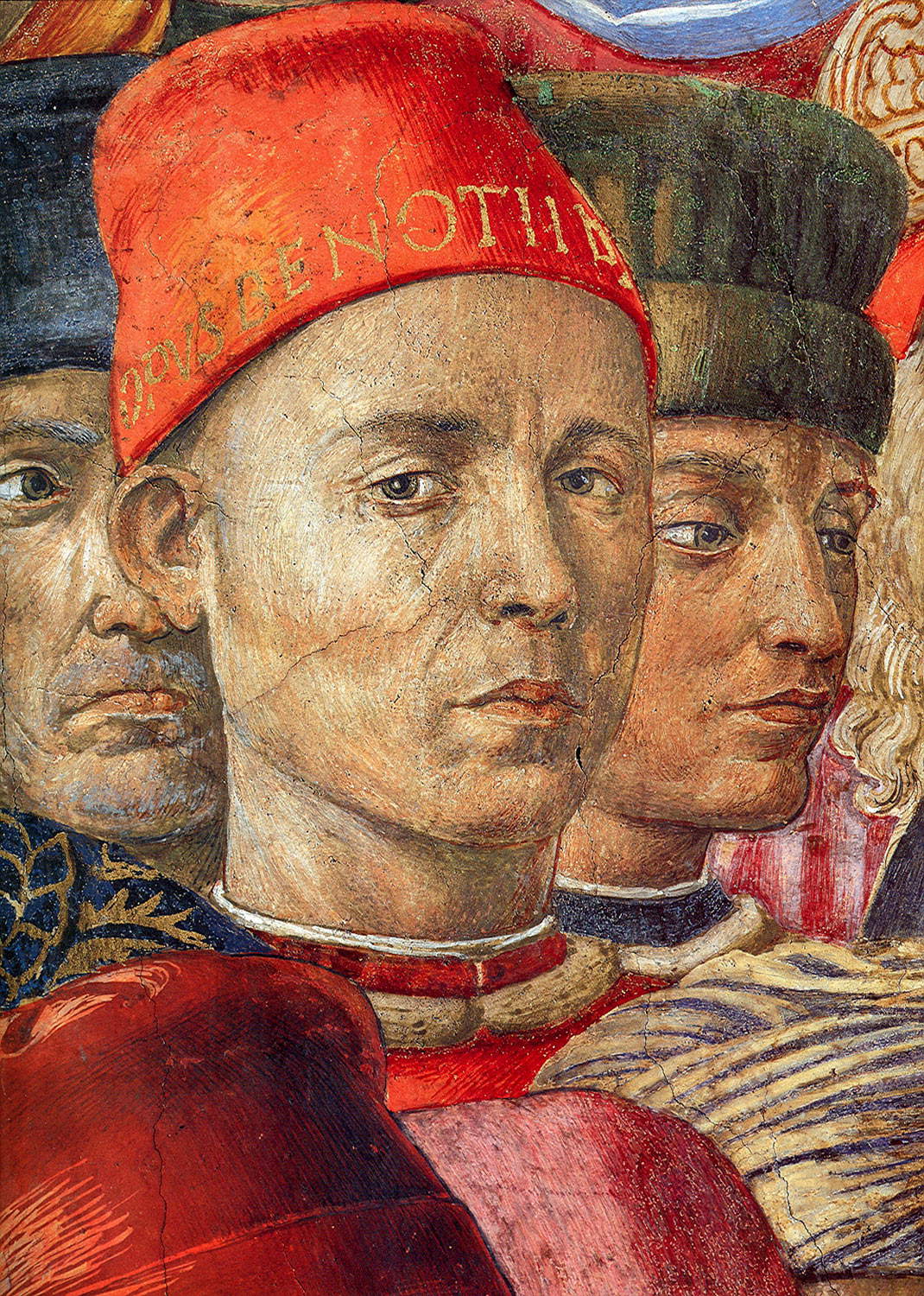
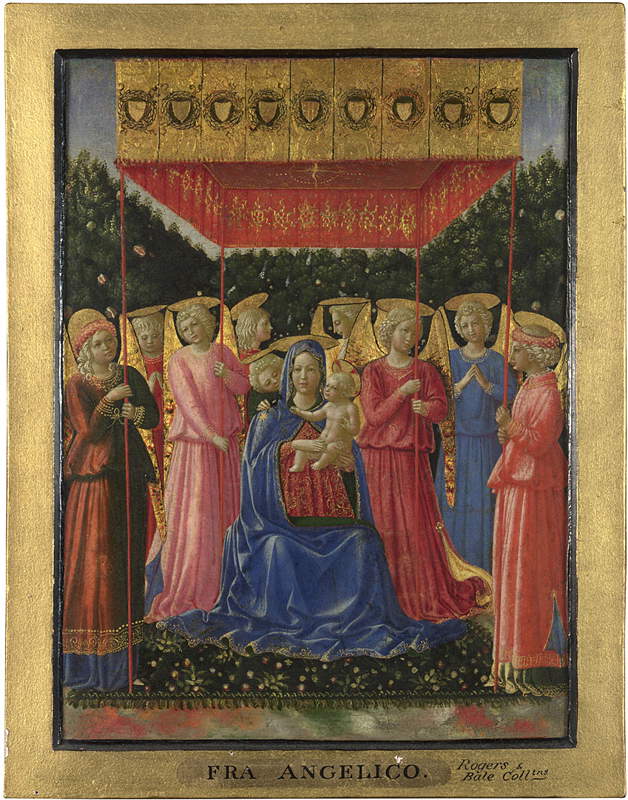

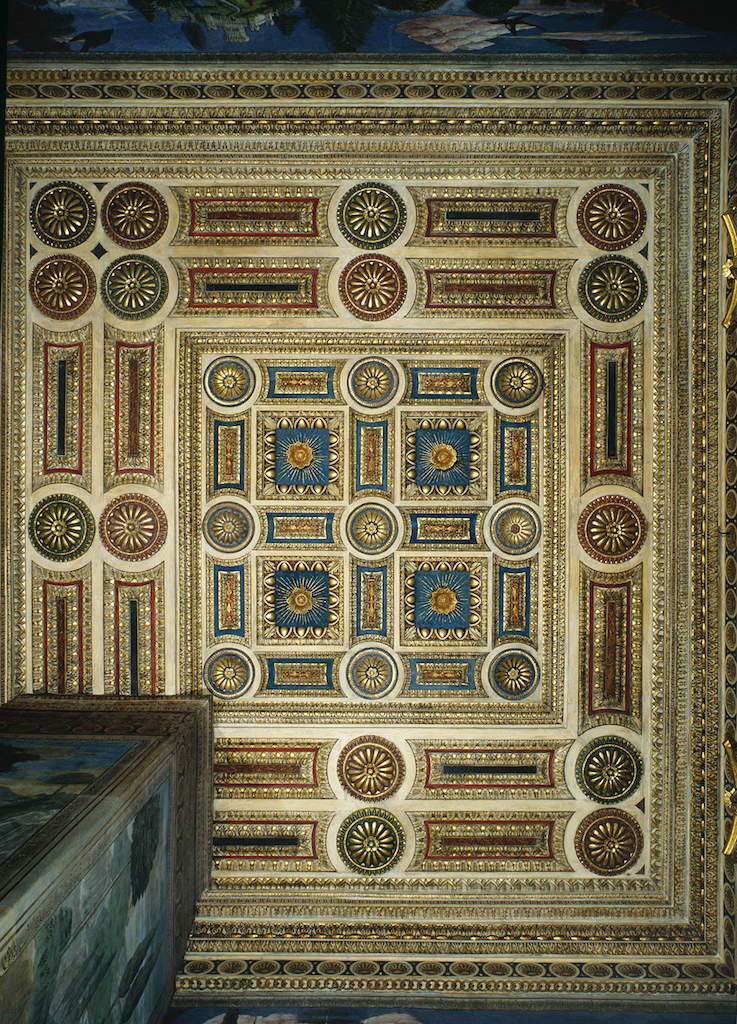
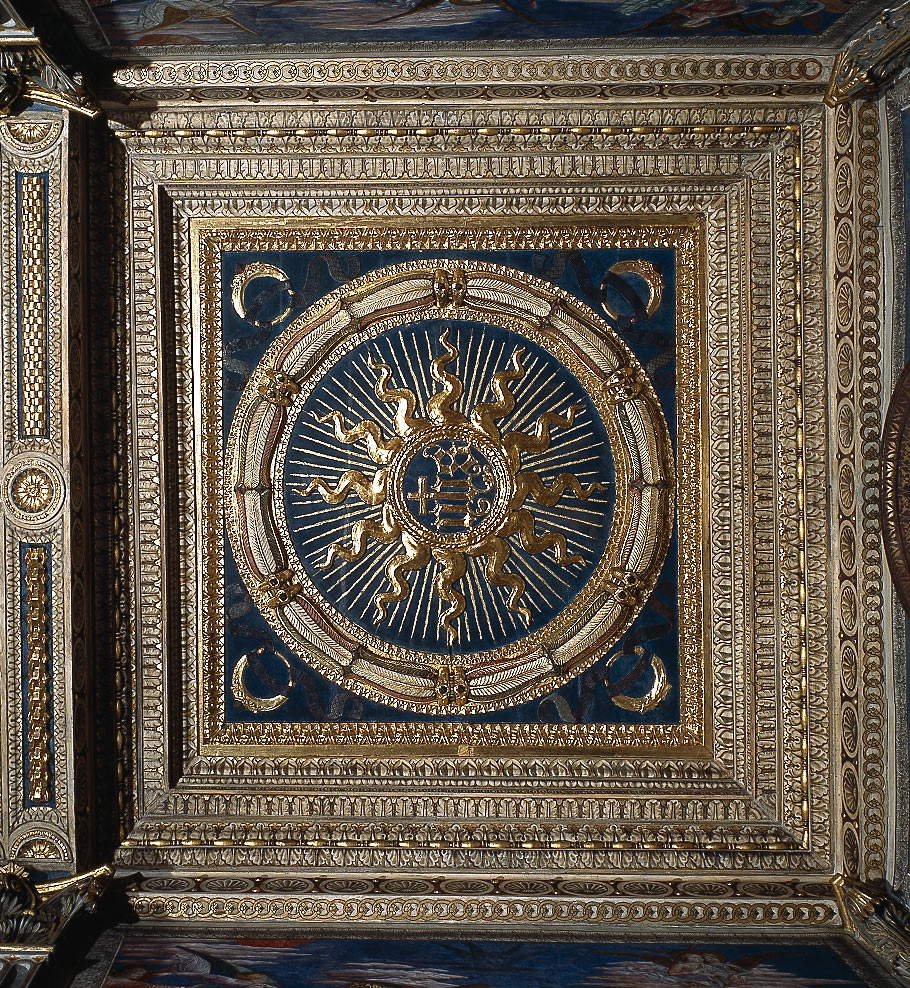

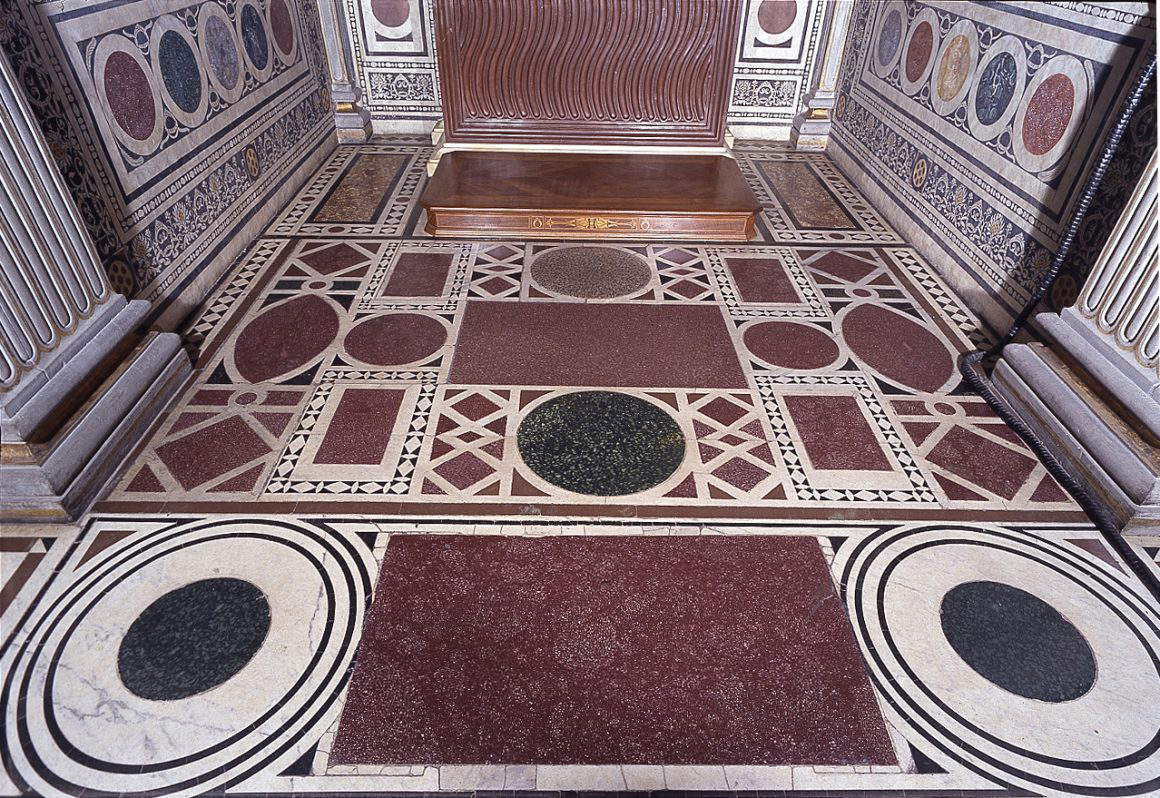
It took a little more than three years to complete the decoration of the chapel: work began in 1459, and Benozzo completed the task at the end of 1463. “Benozzo,” Acidini writes again, “fully living up to the Medici’s expectations, had achieved his absolute masterpiece, covering with dazzling mural paintings the outer doorway, the three large walls of the aula, the three walls of the scarsella, and the narrow bands above the doors of the sacristies.” The frescoes can be read starting from the entrance to the chapel, surmounted by an image of theMystic Lamb placed above an altar on which are seven seals and seven candlesticks, according to a symbolism of Johannine origin that alludes to the end of humanity and the final judgment. Upon entering, one is overwhelmed by the frescoes of Benozzo’s Journey of the Magi painted on three sides of the hall, although the ideal and iconographic centerpiece of the entire chapel is the panel with theAdoration of the Child in the center of the scarsella. The adoration of the infant Jesus, placed on the bare ground, is accompanied by the frescoes decorating the two walls of the scarsella and depicting the angelic hosts giving glory to the birth of the Lord. Despite the alterations they have undergone over time, the frescoes have not seen their magnificence undermined, although the environment, throughout history, has experienced various vicissitudes. In the mid-17th century, when the Medici still held ownership of the palace, two rectangular windows were opened on the south wall, near the entrance door, to give light to the room (today one, the left one, remains). In ancient times, in fact, the Chapel of the Magi was illuminated only by candlelight, and this also explains Benozzo’s choices of colors and materials: when the ancient lighting conditions are recreated, writes Cristina Acidini, “here each element finds an appropriate position in the virtual spatiality of the scenes and contributes to the overall harmony. The landscape recedes into the penumbra, acquiring perspective depth; the horses in the foreground emerge with the statuesque power of ancient monuments (of Marc’Aurelius or the Dioscuri of Montecavallo, which Benozzo had seen in Rome); the colors soften, while the gold and silver acquire splendor.”
Then, in 1659, Marquis Gabriello Riccardi acquired the palace, and ten years later plans began for the grand staircase, which, however, in the original idea called for the demolition of the Chapel of the Magi to make room for a new landing: there were strong protests from illustrious personalities of Florence at the time, which is why in 1688 the original design, attributed to Pier Maria Baldi, was replaced by that of Giovanni Battista Foggini, who preserved the chapel but altered its southwest corner, which was rebuilt with a recess (one will notice, upon entering the chapel, that the frescoes are cut down: this is clearly seen when observing Baldassarre, whose horse is cut in half). During the work on the room to allow the construction of the grand staircase, the ceiling, floor and chancel were also dismantled, although in 1689 the frescoes were restored by Jacopo Chiavistelli (Florence, 1621 - 1698), who also restored the gaps. Again, in 1837 a large window was opened on the wall of the scarsella, resulting in the loss of Benozzo’s frescoes with the symbols of the evangelists Luke and Mark (it was later fitted with neo-Renaissance glass, according to the taste of the time, between 1875 and 1876). In 1929 a “Commission for the rearrangement of the Medici Riccardi Palace” was appointed to reconstruct a room that was as close as possible to the original: thus, the large window opened in the 19th century was closed (today the wall is completely blue: only the symbols of the evangelists John and Matthew remain of Benozzo’s decoration), the oculus with cornice in pietra serena from the chapel was relocated, and the ceilings and floor were reconstructed with the original materials that could be recovered. Finally, between 1988 and 1992, the entire chapel was restored.
In devising the spectacular journey of the Magi, envisioned by Benozzo as a grand procession where, as will be seen, figures of the time also appear, where the characters are dressed in magnificent and luxurious contemporary clothing, and where animals, including exotic beasts, also abound, the painter could have been inspired by the highest iconographic precedent, theAdoration of the Magi that Gentile da Fabriano (Fabriano, c. 1370 - Rome, 1427) had painted in 1423 for Palla Strozzi (now in the Uffizi), but in the end he resolved to create an entirely new image of the ride of the Magi creating a work that celebrated the aspirations of the Medici family (portraits of members of the house from three different generations are in fact painted there), as well as their supporters and allies, in the picture of a cavalcade through a lush countryside characterized by lush vegetation, where fruits and flowers abound (Benozzo’s attention to all elements of the natural should be highlighted), and where there is no shortage of villages and human settlements, among which we also see here and there shepherds, especially in the “facciuole,” intent on grazing their herds.


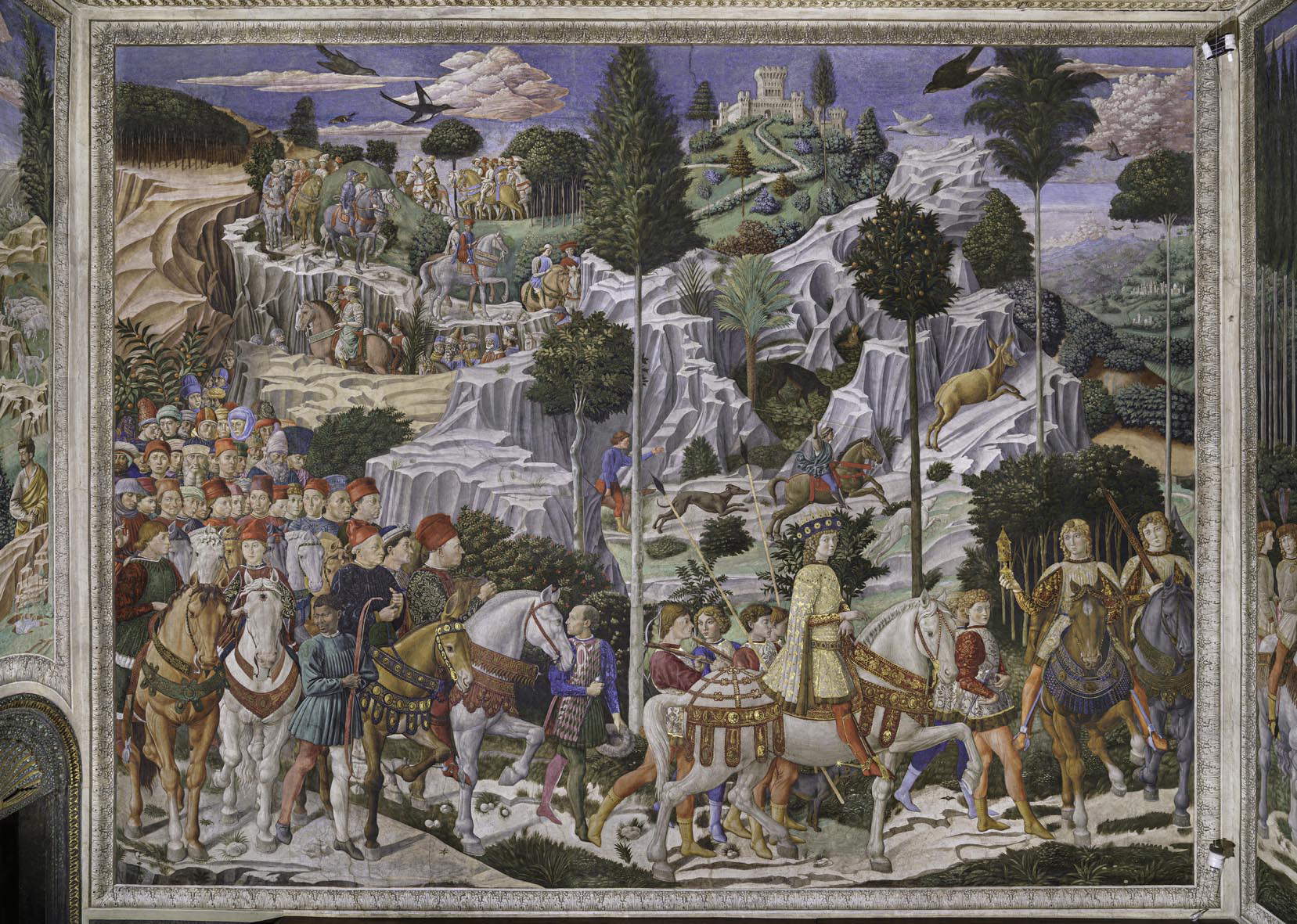
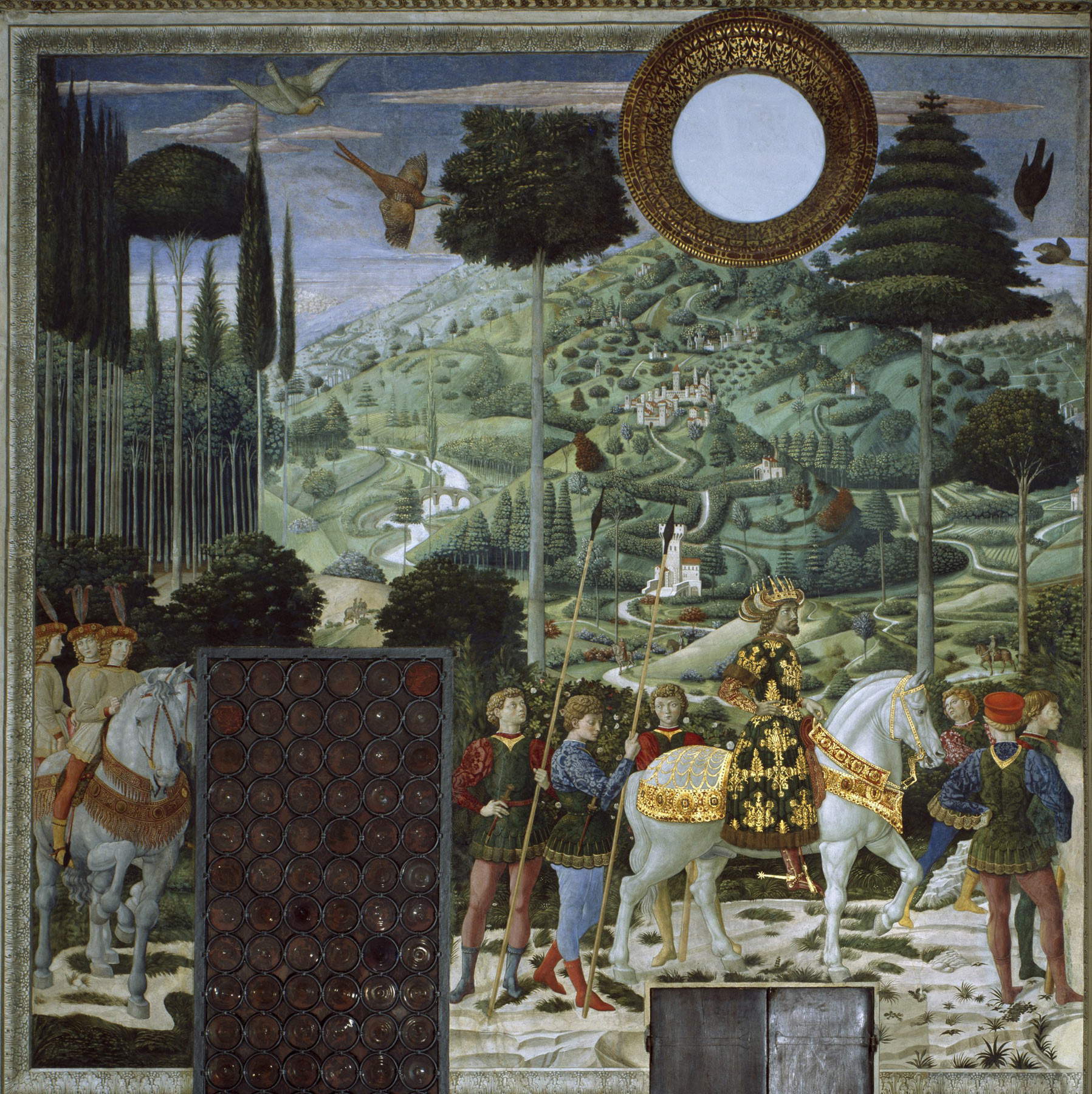

As per typical iconography, the three magi, Gaspar, Melchior and Balthasar, are depicted as a boy, a mature man and an old man: of the three processions, the only one intact today, without the alterations due to seventeenth-century interventions, is that of Gaspar. The young king is dressed in a white and gold brocade robe with a blue mazzocchio (i.e., a typical headdress of the time, open in the center) on his head and decorated with precious gems, while Melchior’s robe is green, red, and blue and the king wears a spiked crown; finally, Balthasar’s robe is purple and pink, and the king wears a spiked crown over a propora hat. These are all colors that refer to Medici symbols. Each of the kings is preceded by two horsemen, one of whom displays the gift for Baby Jesus, and the other is instead the miles spatharius, or soldier carrying the king’s sword. According to a classical reading, the procession of the Magi would be a kind of re-enactment of the Council of Florence in 1439, and on the basis of this interpretation (which is not shared) it would be necessary to recognize in Melchior the emperor John VIII Paleologus, in Balthasar the patriarch of Constantinople, Joseph II, and in Gaspare a very young Lorenzo the Magnificent, who, however, was not even born at the time of the Council, was only ten years old at the time the frescoes were painted, and, as is known from the numerous images of him, was neither blond nor handsome like Benozzo’s Gaspare. One can discard the idea of an idealized portrait because the portraits of the recognizable characters are highly characterized and close to the other images we know of these figures. Here, then, are the real members of the Medici family appearing behind Gaspare’s horse, led by a servant wearing a red and green lozenge livery: Piero de’ Medici is first, on the white horse; behind, Cosimo the Elder rides a mule with blue and gold trappings; between Piero and Cosimo, on the other hand, there is Carlo, the natural son of Cosimo and a Circassian slave named Maddalena, bought on the market in Venice. The two who appear further back are the Medici’s allies: the very young Galeazzo Maria Sforza (on the white horse), future duke of Milan at the time aged 15, and the 40-year-old Sigismondo Pandolfo Malatesta (on the bay horse), lord of Rimini. The real Lorenzo di Piero de’ Medici, that is, the future Magnifico, is among the faces above the lords of Milan and Rimini: he is the little boy above Galeazzo, just shifted to the left, with the mole on his right cheek. Next to him is the younger brother Giuliano, who was six years old at the time. Just above Lorenzo here is Benozzo Gozzoli’s self-portrait, wearing a cap with his signature (“Opus Benotii”). Numerous portraits of Florentines of the time crowd all the walls: next to those traditionally recognized (such as Luigi Pulci and Marsilio Ficino), on the occasion of the exhibition Benozzo Gozzoli and the Chapel of the Magi, Cristina Acidini reiterated the proposal to recognize, in the wall with the magician Balthasar, where moreover Benozzo again self-portrays himself (he is the man with the blue work turban swathed in white on the right, next to the character who shows his hand making the sign of the number five thousand, according to the conventions of the time). Next to Benozzo, on the right, the two figures in profile would be Francesco Sassetti and Angolo Tani, directors of foreign branches of the Medici bank. Next to Benozzo is Neri Capponi and next to him Bernardo Giugni. The taller figure in the red hat could instead be the architect Filarete.
Remarkable is the role of portraiture in Benozzo: the artist, Nocentini and Zucchi write, “made portraiture from life one of his peculiarities in years when he was completely unheard of in Florence, equipped with his usual attention to detail and his refined sensitivity.” On a stylistic level, Benozzo’s painting, supported by a well-studied drawing and very accurate color drafting, “reaches on the walls of the chapel,” explains Cristina Acidini, "a pinnacle of refinement equal to the most precious miniatures of the coeval codices. The painting, applied in thin brushstrokes with a filamentous progression, perfectly indulges the ornate varietas of the scenes. In the robes he renders the motifs of brocades, lampas, imprinted leathers, straw and furs and, in the angels, iridescent silks. In the figures he models faces with rosy and brown complexions, where the maximum lumens are highlighted by fine outlines or rays of white, with a technique that had been perfected by the masters of the previous generation such as Masaccio; he describes blond curls and wispy locks, youthful hands and wrinkled limbs, generic sugars and perspicacious glances." And it is these characteristics that make him one of the most sophisticated portraitists of the time.
It is also necessary to highlight the role of drawing, on which the exhibition Benozzo Gozzoli and the Chapel of the Magi has insisted by reserving an entire room for the sheets that accompanied the conception of the Chapel or preceded it. The attention given to animals is remarkable: at the Uffizi there is a sheet with a Study of a Saddled Horse made in pen, brush and white lead, which because of its uncertain anatomies has been referred to a period ten years earlier than the frescoes, or again a sheet in the Gallerie dell’Accademia in Venice with a cow suckling a calf and which should be included among the workshop repertories. The accuracy in the study of portraits is well attested by a sheet in the Louvre with a Portrait of a Man with Cap, which although it does not find precise correspondences in the chapel’s portraits is nevertheless a witness to Benozzo’s physiognomic investigation, probably conducted from life and a blatant demonstration of the great realism the artist displayed in the chapel’s frescoes. Instead, the Uffizi sheet with Two Male Nudes and Two Sleeping Dogs at Their Feet in a Landscape, a probable study for one of the shepherds painted on one of the chapel’s “facciuole,” can be referred to the chapel’s conception. The sheet with Philemon and the Donkey, Blessing Child Jesus and Magician King, on the other hand, constitutes, says Luisa Berretti, “a valid example of how models were executed for repertories, since, in not even twenty centimeters wide it condenses three figures that, given the individual characters of each of them, one understands, despite being finished drawings, to be independent of each other.”
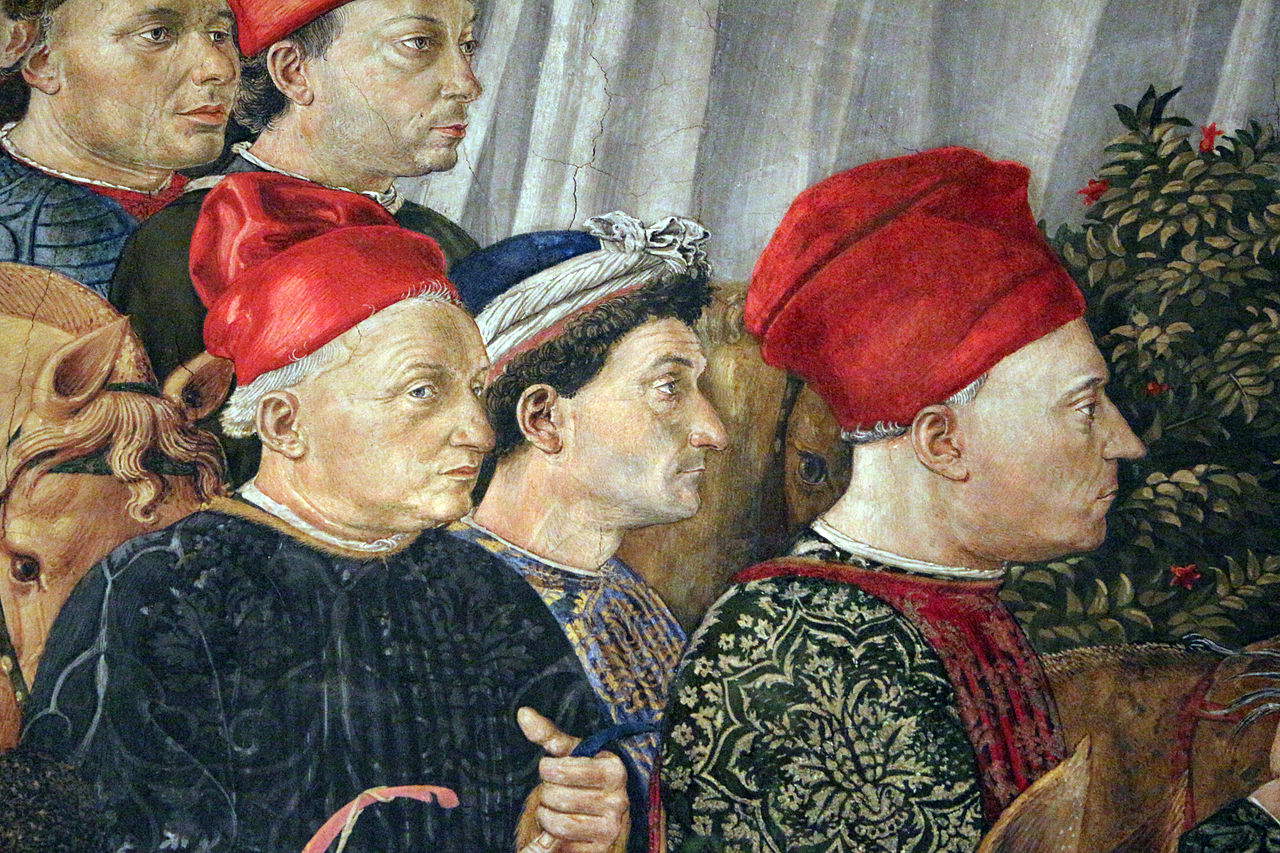


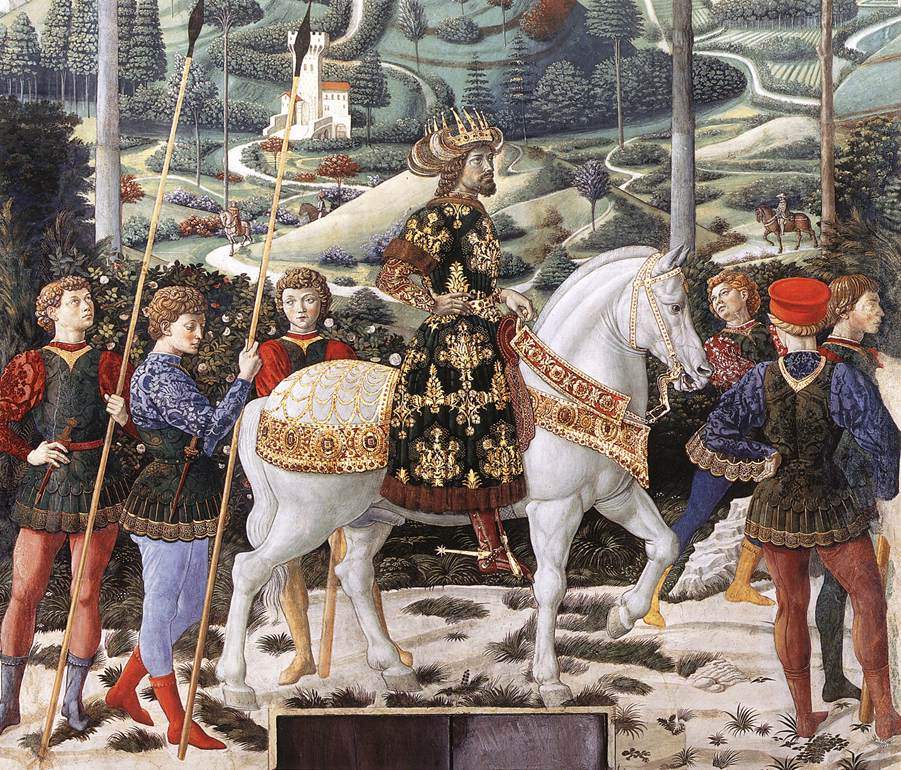
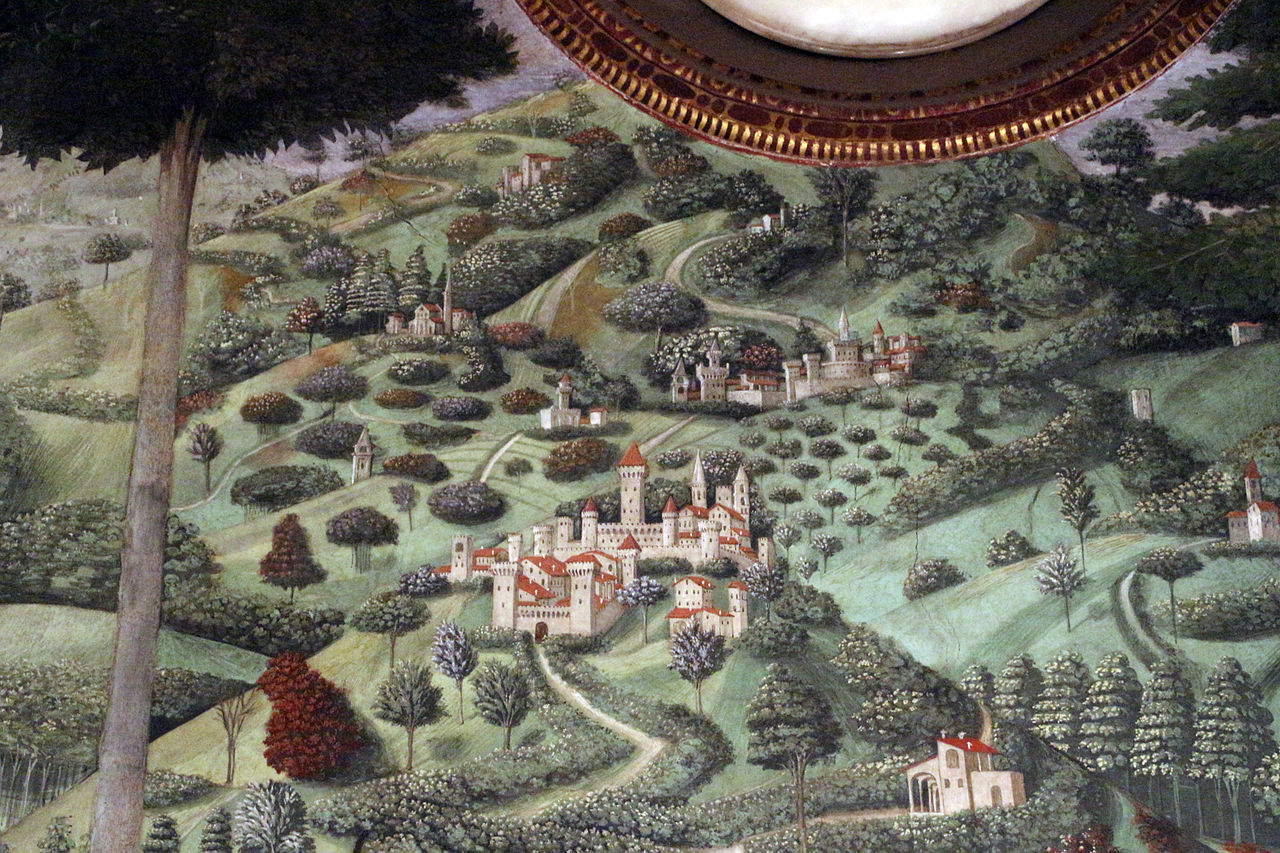
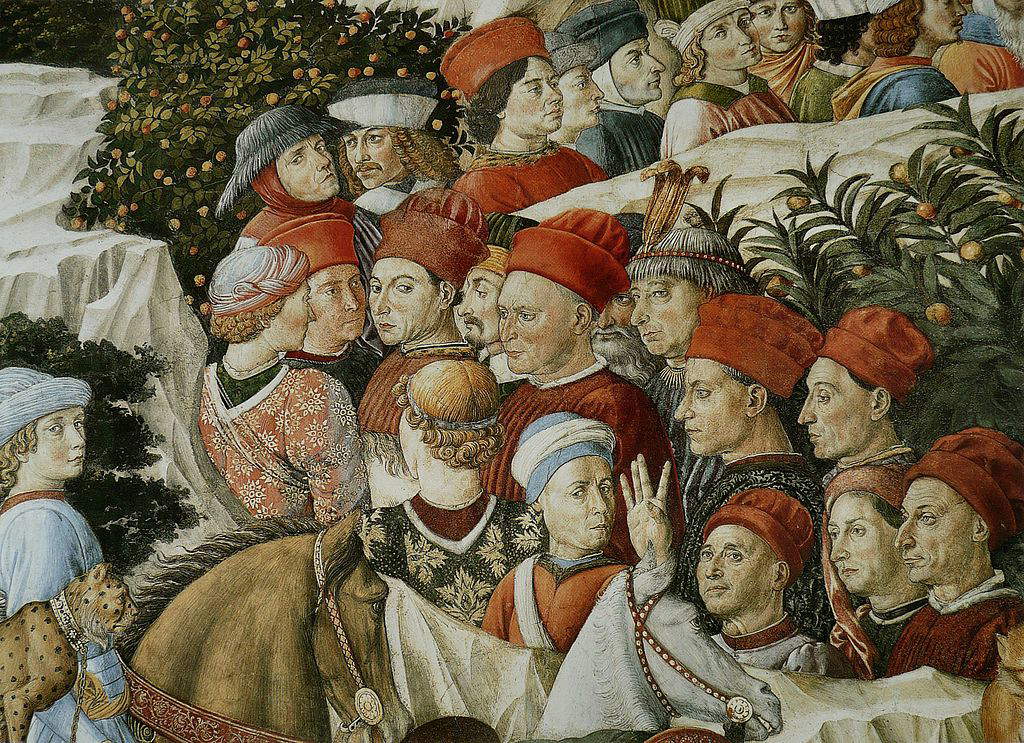
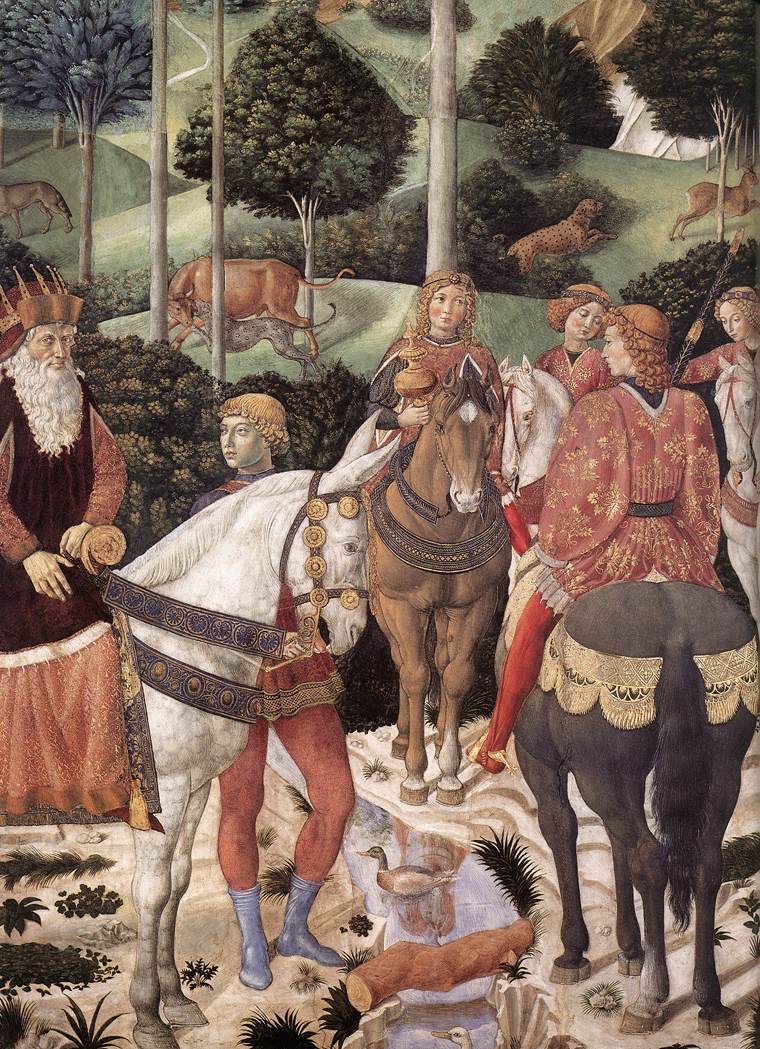
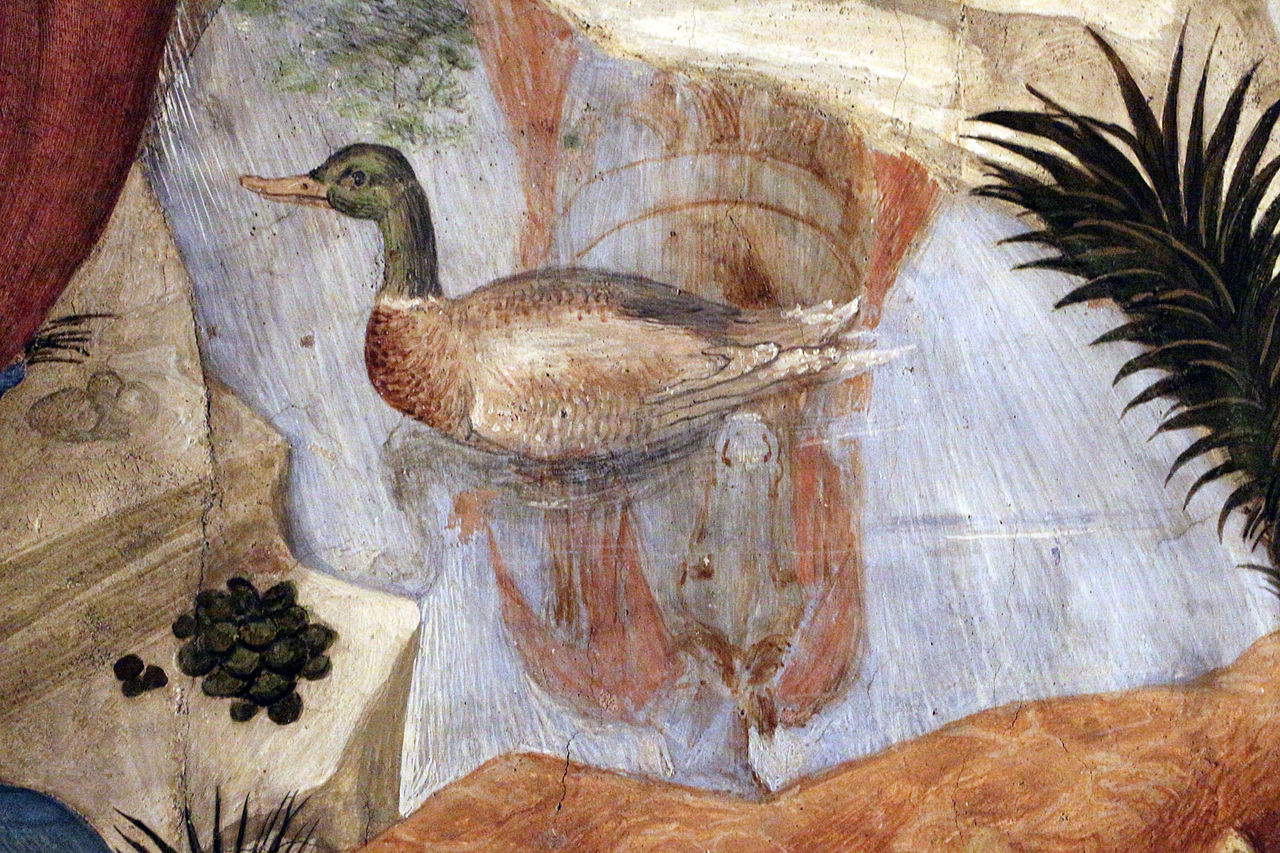


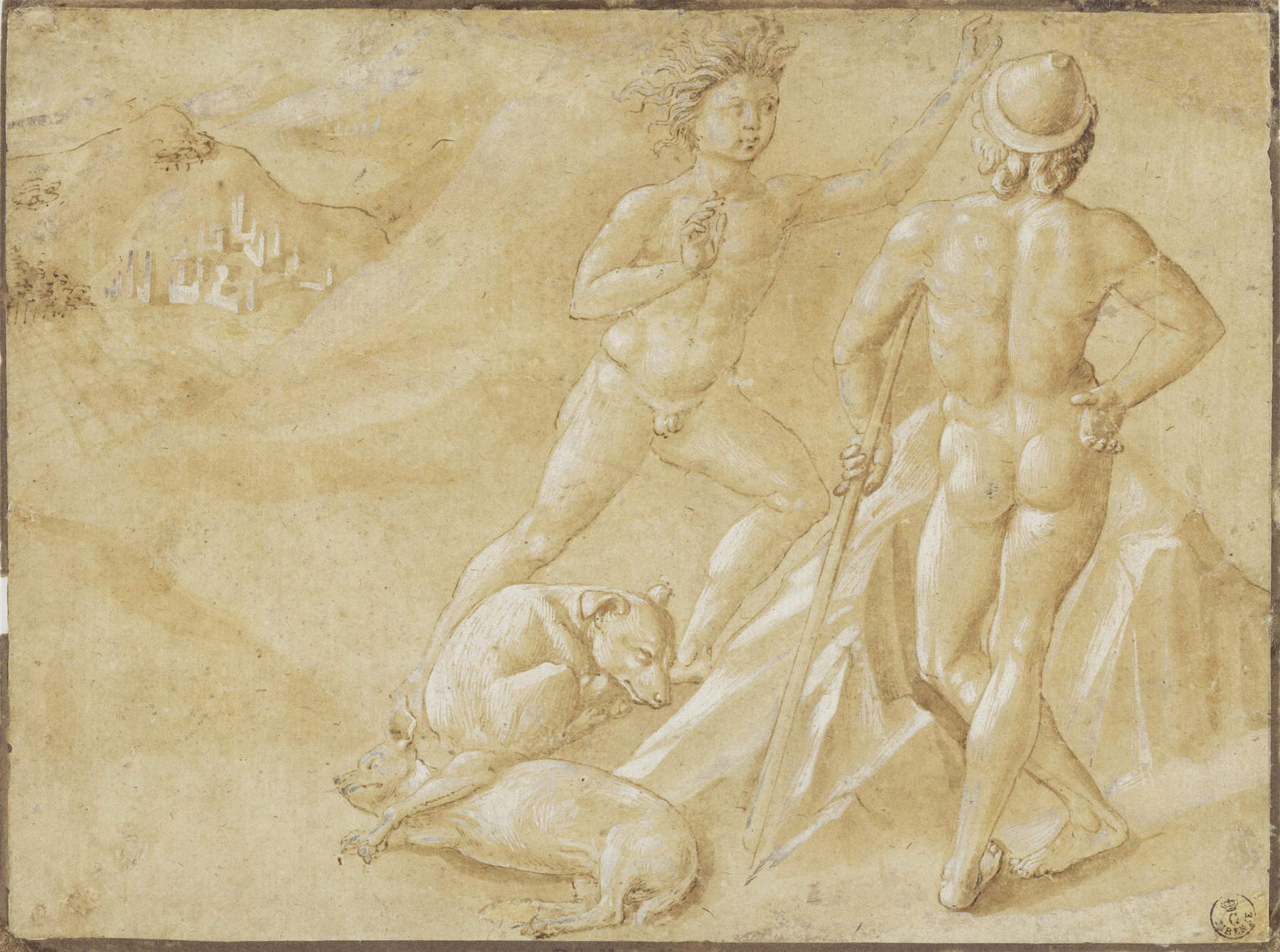
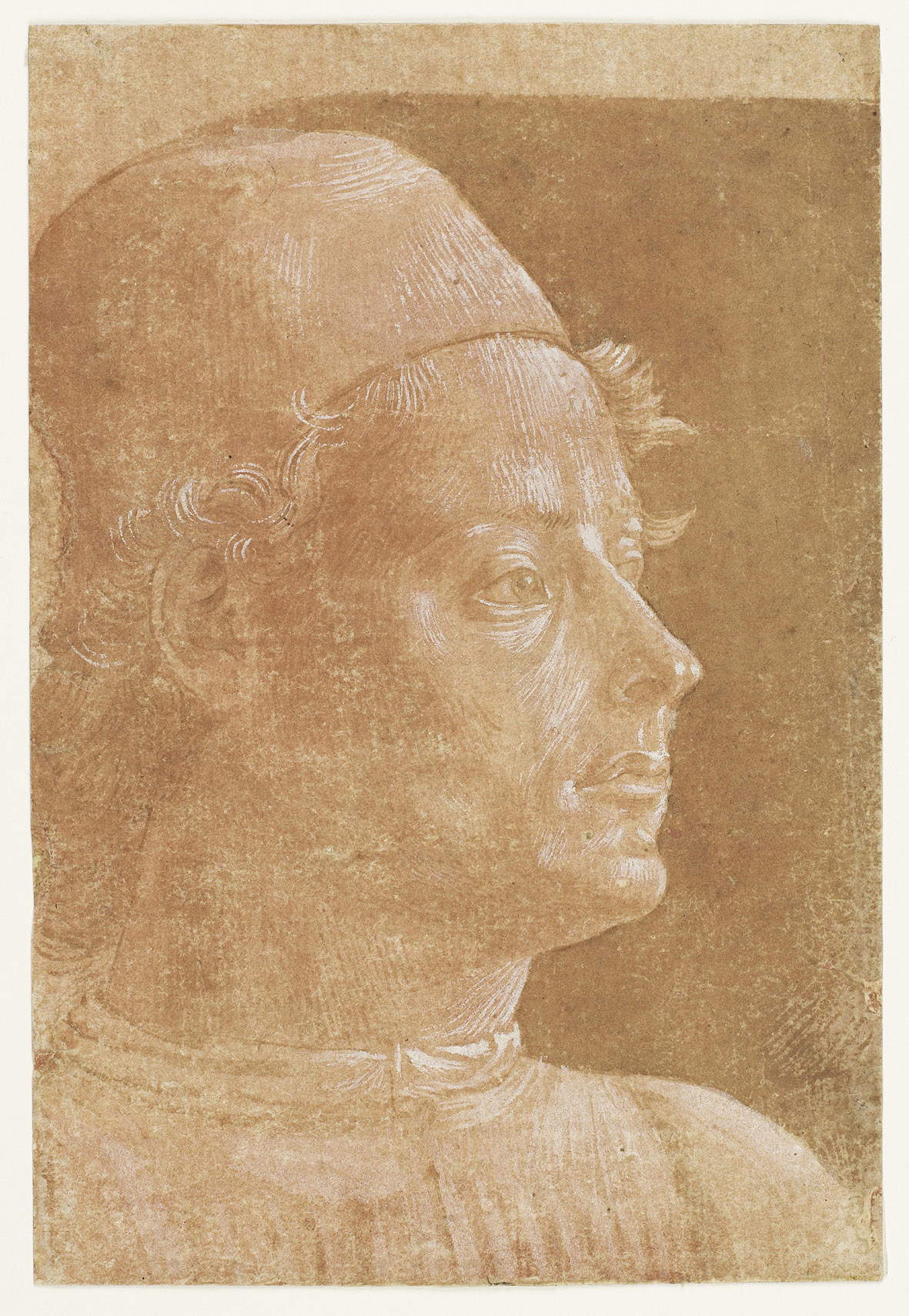
Those who entered the chapel must have been clear about the significance of the iconographic program imagined for the frescoes: “the Magi immortalized on the walls of the chapel, the higher spirits of the angels, depicted on the walls of the scarsella, and Mary, kneeling and adoring,” Nocentini and Zucchi explain, “are witnesses to the incarnation of God in man, in the act of being fulfilled on the altar; to us, the secular crowd, the task of transmuting our attitudes to access this sacred journey of faith.” The actualization of the sacred scene, through the inclusion of characters of the time, was also going to add a further level of interpretation, presenting the cycle as a celebration of the Medici (it will be noted, moreover, that in the three ages of the Magi are mirrored the three generations represented in the frescoes), and going to constitute a novelty on the artistic scene of the time, precisely because the veracity and extension of the portraits of contemporary characters was an unprecedented fact in Quattrocento painting, an expression of Benozzo’s typical willingness to interpret “the humanistically balanced, luminous and spiritual manner” of Beato Angelico, as Anna Padoa Rizzo, one of the greatest experts on Gozzoli’s art, has written, “reproposing it nevertheless personalized in the direction of a greater adherence to the reality of the world, of natural things but also of those created by the happy hand of man.”
All the qualities that the Medici had been able to identify in Benozzo Gozzoli’s art came in handy for the success of the undertaking: the predisposition to sumptuous decorations, the ability to analyze and the verism of the figures, the compositional skills based on a calibrated balance, the accuracy of the drawing, the narrative wisdom. When in the twentieth century the Chapel was in fact rediscovered after it had been forgotten for centuries, it stood as a revelation in the eyes of the many, scholars and enthusiasts who were able to visit it. So much so that it led one of the greatest art historians of the twentieth century, Ernst Gombrich, to write in his 1950 The story of the art that we should be grateful to Benozzo for preserving in their works a memory of the picturesque and colorful life of that time, and that “no one going Florence should miss the pleasure of visiting this little chapel in which something of the taste and flavor of a festive life seems to persist.”
Warning: the translation into English of the original Italian article was created using automatic tools. We undertake to review all articles, but we do not guarantee the total absence of inaccuracies in the translation due to the program. You can find the original by clicking on the ITA button. If you find any mistake,please contact us.